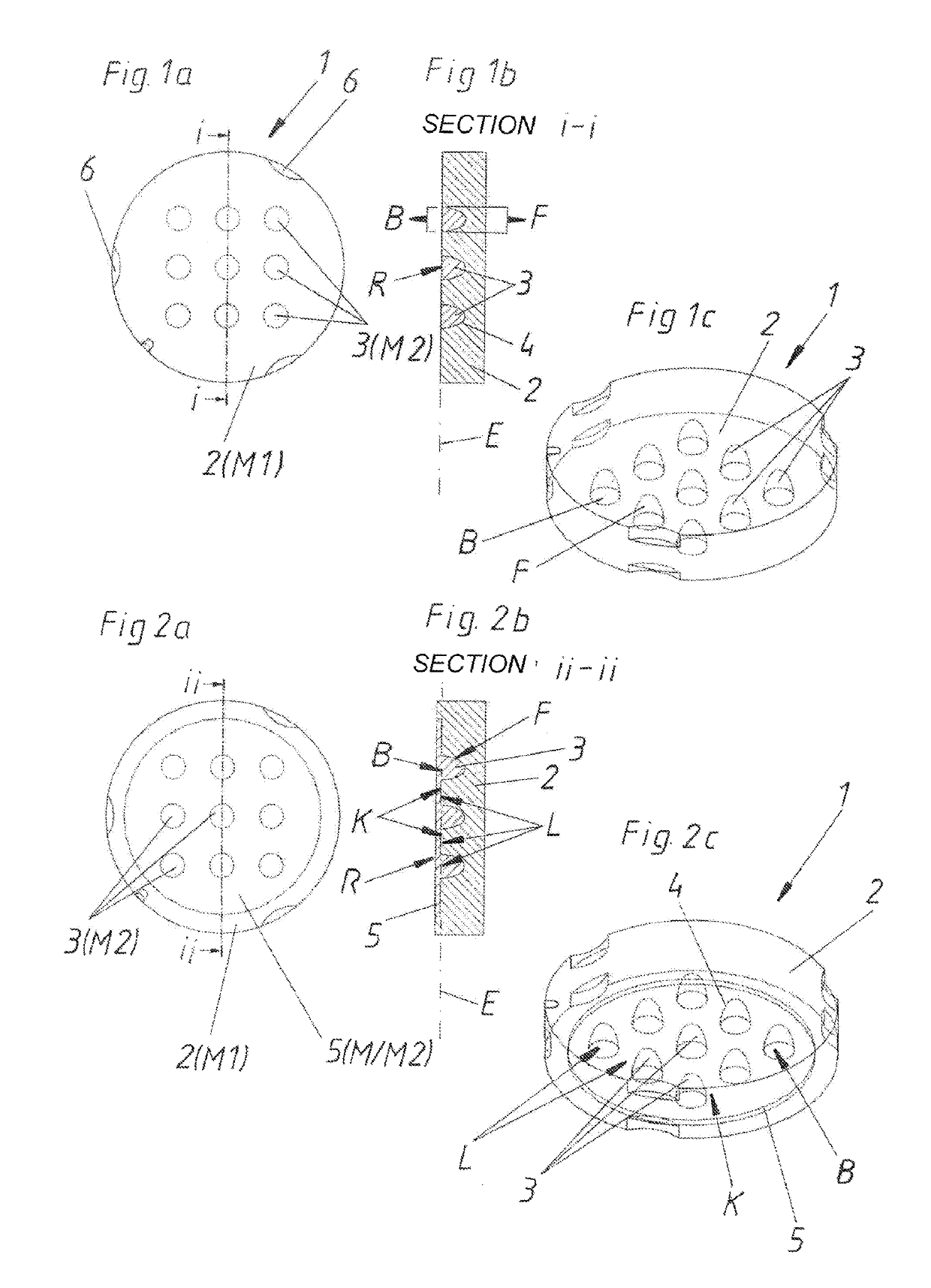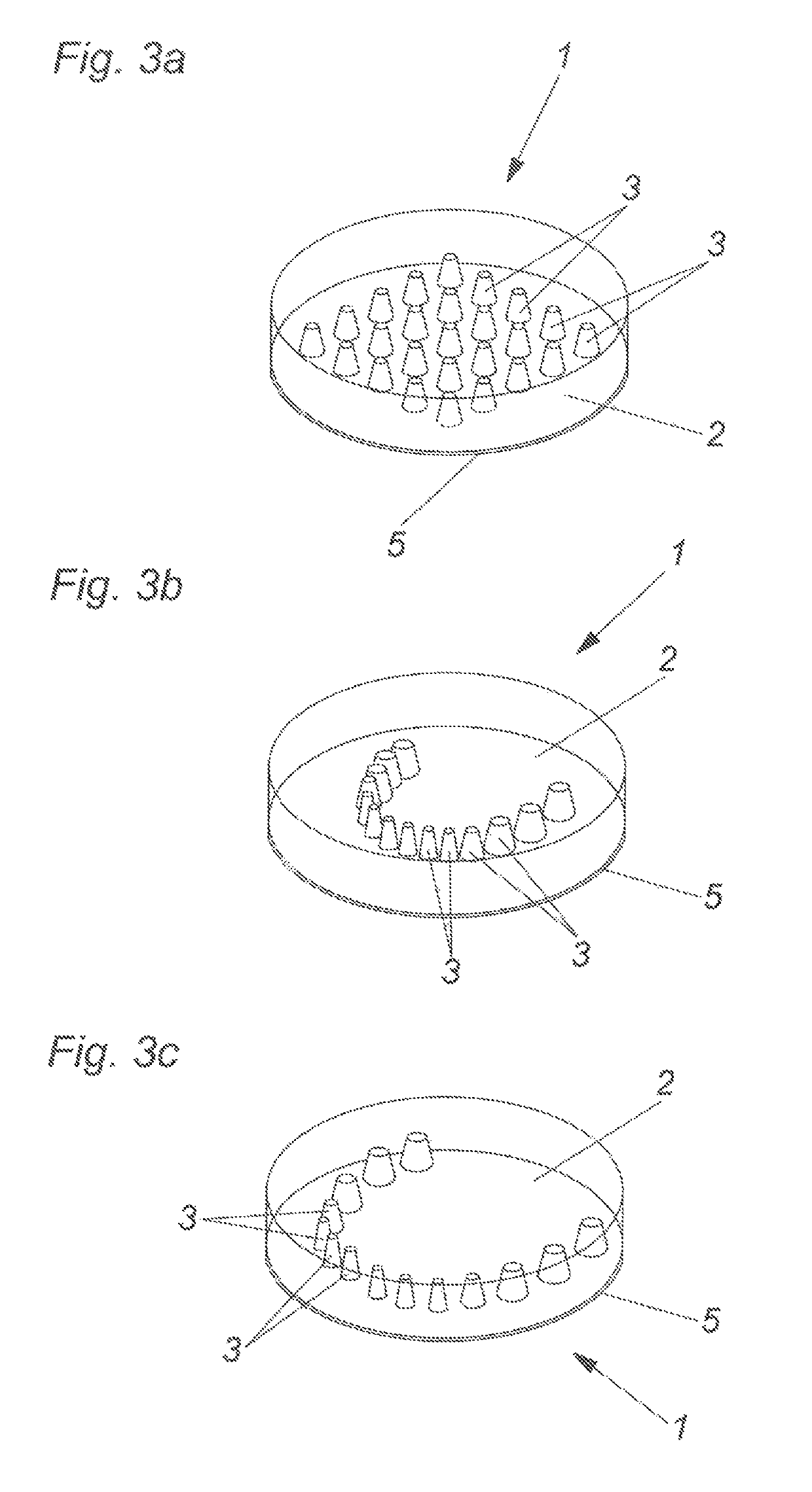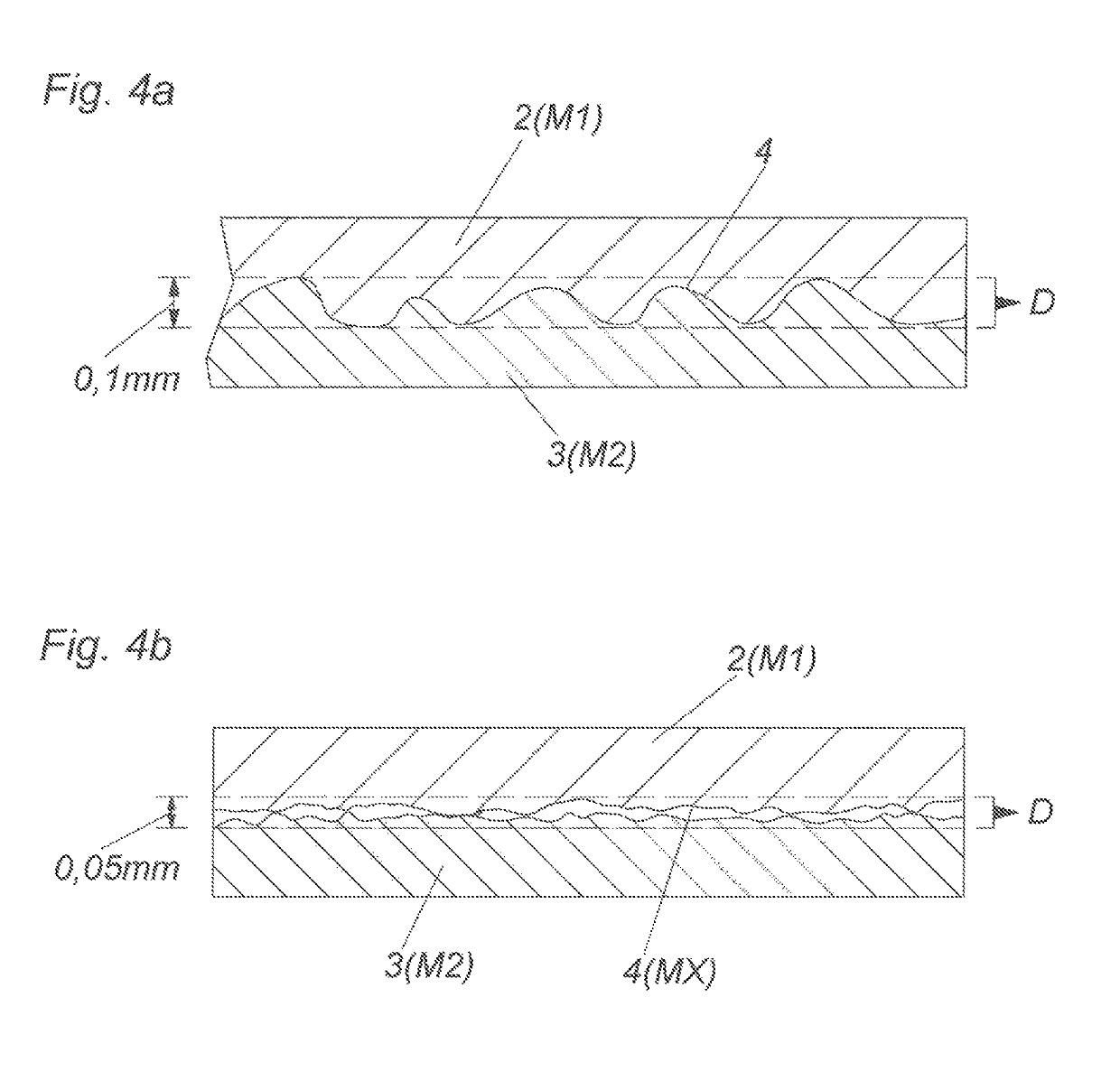Blank for the production of a tooth prosthesis
- Summary
- Abstract
- Description
- Claims
- Application Information
AI Technical Summary
Benefits of technology
Problems solved by technology
Method used
Image
Examples
first embodiment
[0035]The configuration of the core regions 3 and the bed 2 can be clearly seen in the section i-i shown in FIG. 1b, the blank 1 in this case having a plurality of separate core regions 3 with separate surfaces F directed in the direction of the bed 2. In this configuration the surface F is of an entirely convex nature. That surface F together with the surface of the bed 2, that is directed in the direction of the core region 3, forms the boundary layer 4. As a surface, however, the core region has not only the surface F directed in the direction of the bed 2 but also the base surface B that faces away from the bed 2. That base surface B is disposed in the base plane E. All base surfaces B of the core regions 3 are arranged in mutually spaced relationship in the blank 1 and lie in the base plane E. In this first embodiment the base surface B forms the outer surface R of the blank 1.
[0036]FIG. 1c is a perspective view illustrating the total of nine core regions 3 with their base surf...
second embodiment
[0037]FIG. 2a shows a plan view of the blank 1. In this case there is additionally provided a basic layer 5 which comprises a material M different from the first material M1, preferably comprising the second material M2.
[0038]As can be seen from the section ii-ii shown in FIG. 2b that basic layer 5 is in one piece with the core regions 3. Once again however—as in the first embodiment of FIG. 1b—the base surfaces B facing away from the bed 2 are all disposed on the same base plane E. In addition, disposed on that base plane E are the contact surfaces K of the bed 2, that are directed in the direction of the basic layer 5. Those contact surfaces K are adjoined by the surfaces L of the basic layer 5, that are directed in the direction of the bed 2. This therefore means that the surface L of the basic layer 5, that is directed in the direction of the bed 2, contacts both the base surfaces B of the core regions 3, that are provided separately and in mutually spaced relationship, and also...
PUM
 Login to View More
Login to View More Abstract
Description
Claims
Application Information
 Login to View More
Login to View More - R&D
- Intellectual Property
- Life Sciences
- Materials
- Tech Scout
- Unparalleled Data Quality
- Higher Quality Content
- 60% Fewer Hallucinations
Browse by: Latest US Patents, China's latest patents, Technical Efficacy Thesaurus, Application Domain, Technology Topic, Popular Technical Reports.
© 2025 PatSnap. All rights reserved.Legal|Privacy policy|Modern Slavery Act Transparency Statement|Sitemap|About US| Contact US: help@patsnap.com



